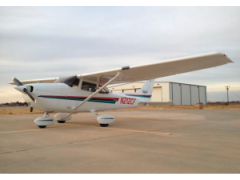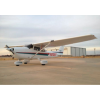Welcome to your journey of obtaining a pilot certificate!
Private Pilot Training Syllabus
Training for the Private Pilot certificate is conducted under Part 61 of the Federal Aviation Regulations, and is broken up into four stages:
Stage 1 – Primary Flight Maneuvers
Unit 1 Introduction of effects of controls and the Four Fundamental maneuvers
Unit 2 Climbing and Descending turns, Power/Pitch/Sight Picture at different airspeeds and configurations
Unit 3 Slow Flight, Approach to Landing Stalls, Departure Stalls
Unit 4 Steep Turns, Traffic Pattern at altitude, Rectangular Course
Unit 5 Maneuver Review, Emergency Procedures, Traffic Pattern at altitude
Unit 6 Traffic Pattern and Slow Flight in Ground Effect
Unit 7 Takeoffs and Landings, High and Low Approaches, Introduction to Forward and Side Slips
Unit 8 Stage Progress Check – Written, Oral and Flight
Stage 2 – Advanced Flight Maneuvers
Unit 1 Maneuvers Review and Traffic Pattern
Unit 2 Review of Stalls and Introduction to Incipient Spins and recoveries
Unit 3 Introduction to Emergency Instrument Flying
Unit 4 Maneuver Review, Emergencies and Ground Reference Maneuvers
Unit 5 Soft and Short Field Takeoffs and Landings
Unit 6 Emergency Instrument Flying
Unit 7 Soft and Short Field Takeoffs and Landings
Unit 8 Stage Progress Check – Written, Oral and Flight
Stage 3 – Cross-Country
Unit 1 Navigation Ground School
Unit 2 Dual Cross-Country to Two Airports
Unit 3 Introduction to Night Flying
Unit 4 Maneuver Review and Emergency Instrument Flying
Unit 5 Dual Night Cross-Country and Pattern Work
Unit 6 Cross-Country Stage Check – Written, Oral and Flight
Stage 4 – Preparation for the Practical Test
Unit 1 Introduction to the Practical Test
Unit 2 Mock Checkride – Navigation, Ground Reference and Traffic Pattern Focus
Unit 3 Mock Checkride – High Maneuvers and Emergency Instrument Flying Focus
Unit 4 Mock Checkride – Emergencies and Traffic Pattern Focus
Unit 5 Mock Checkride with another instructor
Unit 6 Dress Rehearsal Mock checkride
Solo Flights
Solo 1 Solo Flight in the Traffic Pattern
Solo 2 Solo Flight in the Traffic Pattern
Solo 3 Solo in the Practice Area and Pattern
Solo 4 Solo in the Practice Area and Pattern
Solo 5 Solo Cross-Country
Solo 6 Solo in the Practice Area and Pattern
Solo 7 Solo Cross-Country
Solo 8 Practical Test Prep
Solo 9 Practical Test Prep
Solo 10 Practical Test Prep
Pricing
Flight instruction includes all time that your instructor spends assisting you in learning knowledge, skill and decision making, both in the classroom and in the airplane.
Hourly Instruction – $55 an hour – Total instructional hours needed to complete training can vary depending on a number of factors including frequency of lessons, your level of preparation for each lesson, and the rate at which you learn. Budget for at least 100 instructional hours, but it’s common for pilots to need additional instruction time, especially if they experience breaks in training, missed lessons, and can’t consistently prepare for each lesson.
Aircraft Rental
Max Aero has aircraft available to rent while you are training for a certificate. See our Airplanes page for current rental rates. For budgeting purposes, expect to consume:
50-60 hours if training 3 lessons per week
60-70 hours if training 2 lessons per week
70+ hours if training 1 lesson per week
Other things you’ll need along the way
Besides instruction and aircraft rental, there are other expenses that you need to plan for to accomplish your training.
Student Pilot Certificate and Third Class Medical certificate (approx. $100).
Textbooks and test prep books($50-$100)
Headset ($150-1050)
Pilot Operating Handbooks ($30-80)
Flight Plan Logs ($5)
Aeronautical Sectional Charts ($8)
Airport Facility Directory ($6)
Kneeboard ($35)
E6-B Flight Computer and Plotter ($50)
Knowledge Exam Fee ($150)
Practical Test Examiner Fee ($500)












